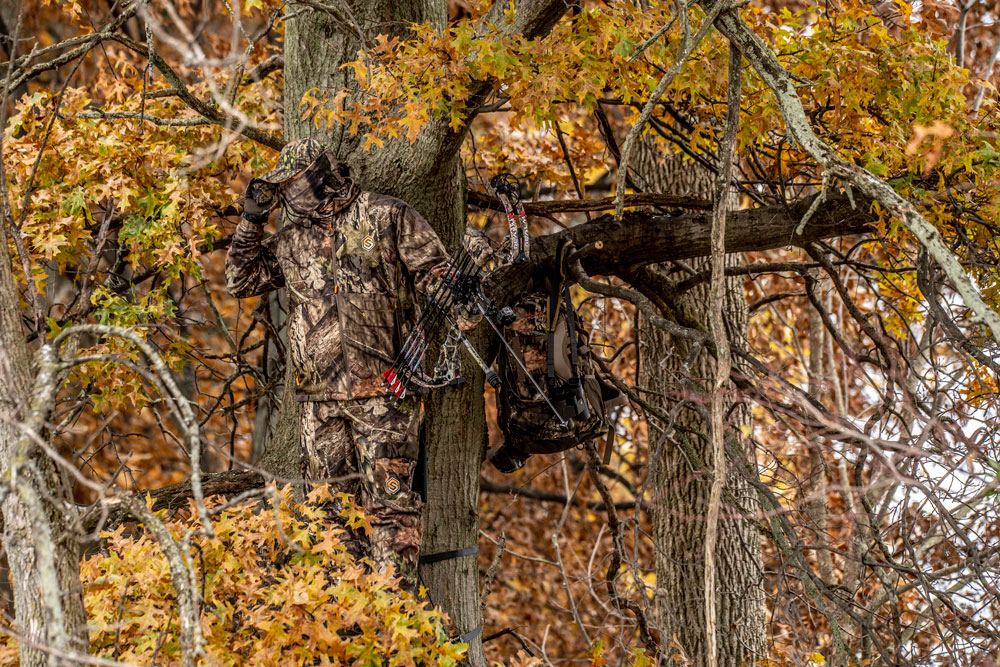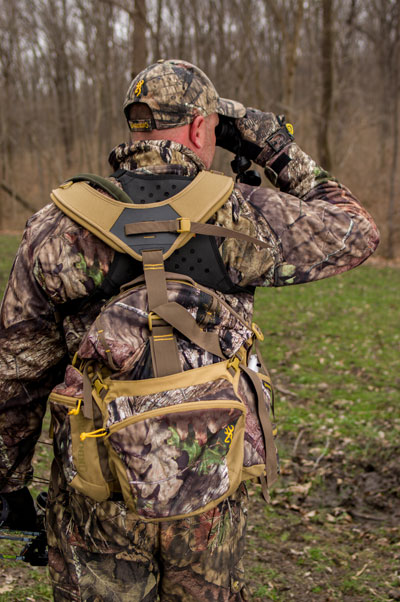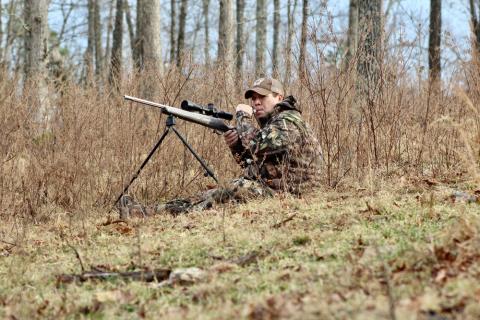provided by John Phillips
Paul Butski of Scio, New York, has been a Mossy Oak Pro from the very beginning of the company. Paul historically has been a turkey-call manufacturer, worked with Walker’s Game Ear and is currently the sales manager for GSM Outdoors that owns Stealth Cam, Hawk Treestands, NAP Archery Products, American Hunter Feeders, Hunter Specialties, HME products, Birchwood Casey, Muddy and other outdoor brands.

One of the critical ingredients to having a comfortable and successful hunt is the equipment you carry in your day pack when you hunt during gun or bow season. For me, the most critical ingredient is having sandwiches and something to drink. I also take:
Scent-A-Way spray or another type of cover scent. If you’re hiking a mile or two into the back of the property you’re hunting, more than likely you’ll generate plenty of human order. Although I may not neutralize all the human odor my body puts out, I know I drastically can reduce that odor by having some type of scent eliminator in my pack.
Binoculars and my rangefinder. These two optics can help you to spot more deer, see the direction they’re moving, determine the range you are from the deer and spot an opening where you probably can take a shot.
Some type of deer drag because when I go into a very remote area, I may or may not have a friend hunting with me. A deer drag can make the chore of getting the deer out of the woods easier and quicker than my trying to drag that deer by its antlers or feet.
 A note to leave in my car to tell my family or my friends where I’m hunting. Then if I need help to get the deer out, or I get in trouble, my friends and family can find me.
A note to leave in my car to tell my family or my friends where I’m hunting. Then if I need help to get the deer out, or I get in trouble, my friends and family can find me.
My cell phone. I should know, from hunting deer in bow season, whether or not I’ll have cell service in the area I plan to hunt.
OnX Maps. If I’m hunting on property that I’ve never hunted before, I’ll have OnX maps loaded onto my cell phone. Then even if I don’t have cell service, I still can download those maps and navigate back to my truck.
A small cellphone battery charger, so that if I run my battery down navigating to the spot I’m hunting, I can recharge my cell phone. Then I either call or use my navigation system to know which direction I need to go to get the deer and myself out of the woods.
Two flashlights and batteries. If the batteries on my number-one flashlight go dead, I’ll need to use the second flashlight to see how to take the batteries out of my number-one flashlight and use the second flashlight to find the extra battery case in my pack, take the battery out of the case and put the battery properly in the first flashlight.
A first aid kit with Band-Aids, moleskin, aspirin and any medicines I may need with me too.
Fire starter, wind direction powder and a space blanket. No one ever plans to have to spend the night in the woods, however that may happen. By having a space blanket, to wrap up in and matches and/or a lighter to start a fire, you’ll be much more comfortable if you have to stay in the woods until the next morning.
Extra shells. If I’m hunting with a rifle that has a clip, I’ll put those extra shells in that clip and put the clip in a Ziploc bag to keep moisture out of them.
A lightweight, compactable Gore-Tex rain suit for two reasons. If I encounter very cold weather, the rain suit will cut the wind and help me preserve my body heat. If rain or snow falls, I’ll stay dry.
A gut hook. Then if I have to field dress my deer, I have the equipment I need to perform that task. I’ll have some Ziploc bags to put deboned meat in to lighten my load instead of having to drag the deer back.
Rope or some webbing to hang the deer or the meat up in a tree until I can return to my vehicle.
Flagging tape to mark my trail to return to my downed deer.
A compass. Then if my batteries go down on my cell phone, and if you’ve noted the direction you went into the woods, then at least you’ll know the general direction to come out of the woods.
I think knowing how to navigate into the woods, navigate to your stand site and navigate out of the woods, whether by day or night, may be the most important skills required for success for the deer hunter.






























